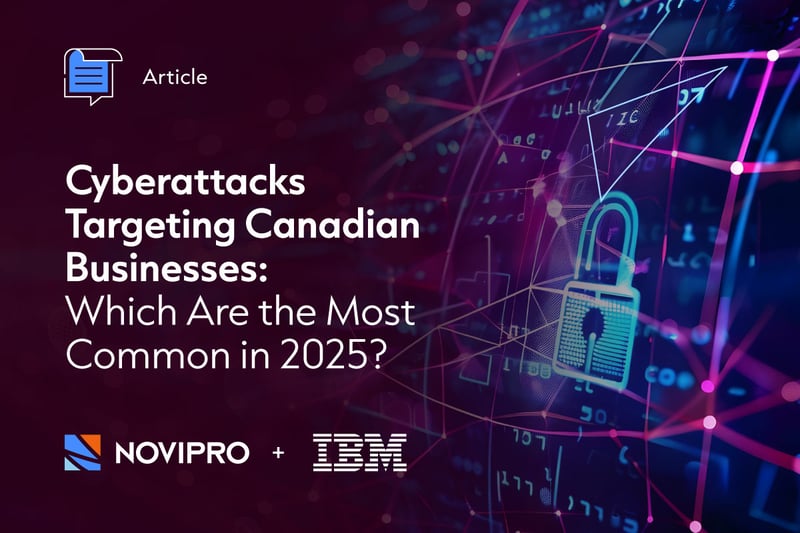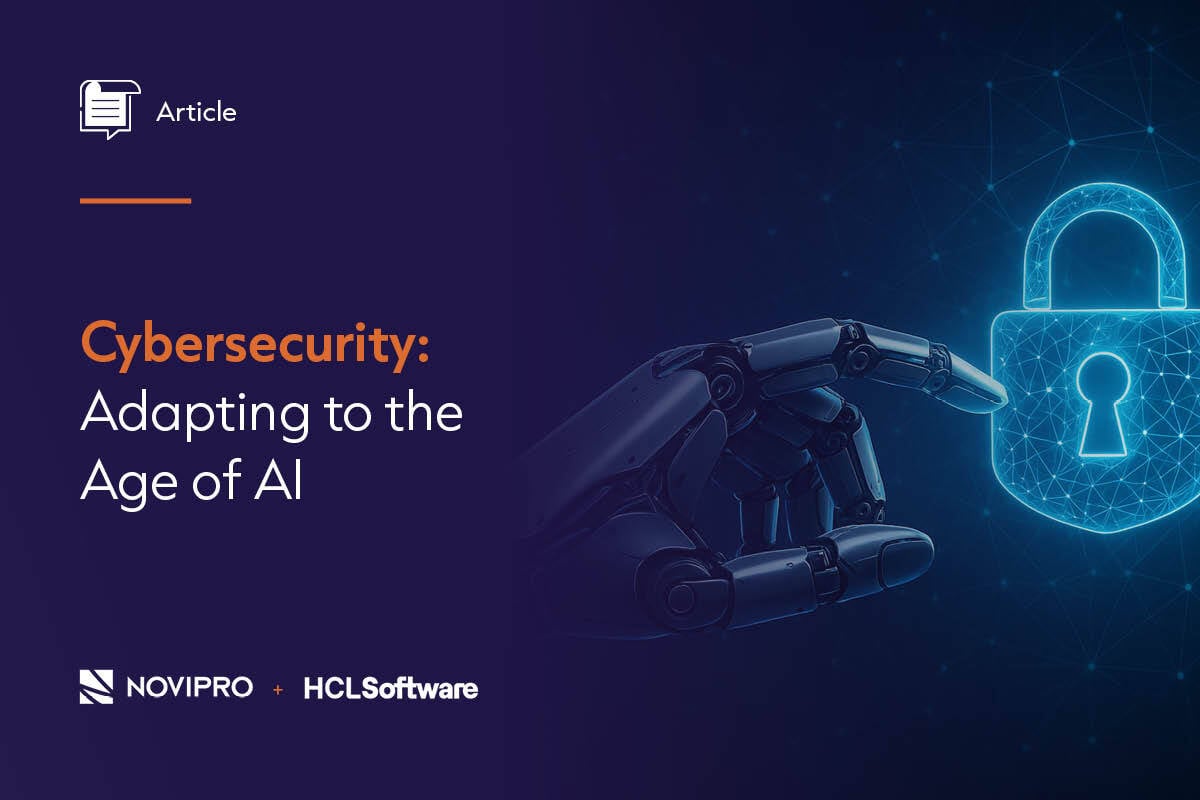Canadian Businesses Are Not Prepared
Although 70% of Canadian companies plan to make a significant investment in cybersecurity and 33% identify it as the top issue of the year, concrete efforts to build truly effective strategies remain insufficient.
The 2025 IT Trends reveals that 46% of organizations have not reassessed their security practices despite a surge in high-profile incidents. In addition, 28% have provided no cybersecurity training to their employees, and among those that have, 27% are unsure whether they will continue these initiatives next year. This highlights a clear gap between perception and action.
“Cybersecurity measures are too often postponed because companies wrongly assume they won’t be targeted. Yet many cases show that this delay — sometimes prolonged — has coincided with the occurrence of a cyberattack, exposing the consequences of such neglect,” warns Roger Ouellet, Director of Security Practice at NOVIPRO.
For more data and insights on cybersecurity,
download the IT Trends report for free.
The Top 5 Cyberattacks Targeting Canadian Businesses
In 2025, Canadian companies are facing an increasingly high-pressure digital environment.
- Ransomware tops the list of threats
According to IBM’s 2025 Cost of a Data Breach Report, the average cost of an attack in Canada now exceeds CAD 5 million, and nearly 30% of organizations have fallen victim over the past 12 months. Incidents like the one involving Nova Scotia Power—where the personal data of hundreds of thousands of customers was exposed—serve as a stark reminder that ransomware strikes indiscriminately, regardless of size or industry. Moreover, the impact of such attacks often continues to grow as stolen customer data is exploited over time. - Close behind are phishing and Business Email Compromise (BEC)
Phishing campaigns have become so sophisticated that they sometimes bypass even advanced security filters. A Vancouver-based law firm lost CAD 2.3 million after being tricked by fraudulent emails that perfectly mimicked legitimate partners. Attackers are using increasingly refined techniques such as typosquatting—subtly altering fonts or characters to make malicious domains nearly indistinguishable from real ones, even to trained eyes. - Data theft and leaks rank third
The widespread exploitation of the MOVEit file transfer vulnerability in 2023 and 2024 impacted several Canadian organizations, compromising millions of customer records in a single breach. - Supply chain attacks come next
Particularly concerning for businesses relying on third-party tools, a single vulnerability in one vendor’s systems can open the door to dozens of interconnected organizations. - Finally, identity compromise is surging
With the rise of remote and hybrid work, stolen credentials have become a major entry point for attackers. Even organizations using multi-factor authentication (MFA) are not immune—Harry Rosen saw its internal systems breached following credential theft, illustrating how quickly attackers adapt.
A New Threat Has Emerged
We also can’t overlook a new and fast-growing attack vector: ghost AI. According to IBM’s report, 20% of companies reported experiencing a breach linked to ghost AI incidents—malicious artificial intelligence that infiltrates and exploits existing AI systems in a stealthy and often undetectable way. These attacks are estimated to generate additional costs of roughly CAD 200,000.
IBM’s report also notes that the average global cost of a data breach now stands at approximately USD 4.44 million.
In the face of this rising threat, experts stress that only strategies combining cyber resilience, identity governance, and proactive monitoring will enable organizations to effectively contain these evolving risks.
What Strategies Should Businesses Adopt?
As highlighted in the IT Trends, the situation is clear and concerning: cybersecurity is still not being taken seriously enough. Cybersecurity training programs are becoming less common, 73% of companies either don’t have or don’t know if they have cyber insurance, and 33% of Canadian businesses and 19% of Quebec-based companies are still unfamiliar with Law 25.
Roger Ouellet emphasizes: “Organizations must urgently recognize the dangers and risks of weak cybersecurity and start thinking about a real strategy — and the means to implement it.”
At NOVIPRO, we recommend that companies adopt an integrated cybersecurity approach that combines prevention, detection, and rapid response to counter evolving threats. In practical terms, this means:
- Continuous employee awareness through interactive training and phishing simulations to reduce human error
- Strengthening data protection with advanced encryption and the adoption of a Zero Trust model, granting only the minimum access required
- Implementing a 3-2-1 backup strategy (three copies, two different media, one offline) to mitigate ransomware impacts
- Regular third-party risk assessments to secure the supply chain
- Frequent penetration tests and security audits to ensure continuous improvement of defenses
We work with leading partners such as IBM to offer tailored solutions addressing today’s top cybersecurity challenges. For instance:
- IBM Guardium and Cyber Resilience solutions protect critical data through continuous monitoring and automated incident response
- Watsonx Governance supports compliance and data traceability
- IBM Verify strengthens identity security with multi-factor authentication
- And tools like HashiCorp Vault enable secure secrets and access management in hybrid and multicloud environments
No matter their size or industry, businesses must strengthen their cybersecurity posture. Your employees, clients, and partners depend on it. While many organizations face similar challenges, their budgets, execution capacity, and management resources vary. NOVIPRO helps companies assess their needs and choose the right solutions and services to ensure long-term resilience.
Take the lead — book a free strategy assessment with a NOVIPRO expert today.








